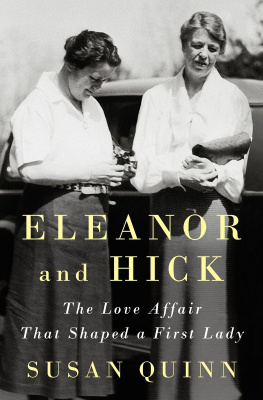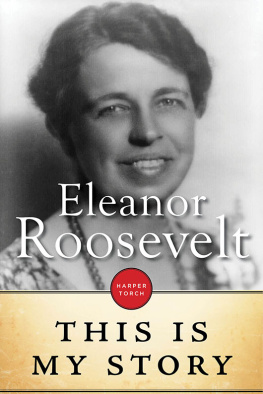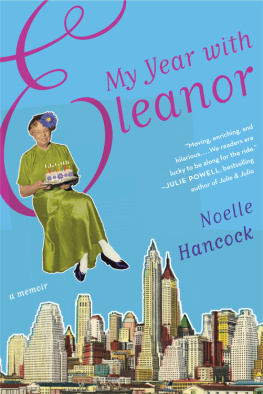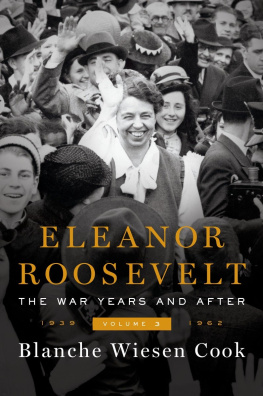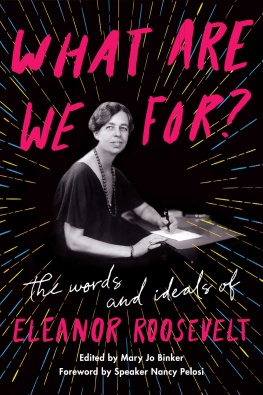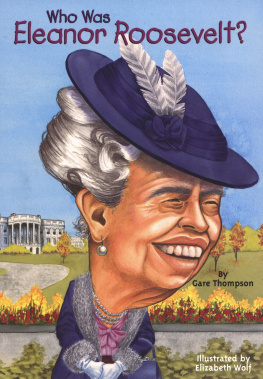Susan Quinn - Eleanor and Hick: The Love Affair That Shaped a First Lady
Here you can read online Susan Quinn - Eleanor and Hick: The Love Affair That Shaped a First Lady full text of the book (entire story) in english for free. Download pdf and epub, get meaning, cover and reviews about this ebook. year: 2016, publisher: Penguin Press, genre: Non-fiction. Description of the work, (preface) as well as reviews are available. Best literature library LitArk.com created for fans of good reading and offers a wide selection of genres:
Romance novel
Science fiction
Adventure
Detective
Science
History
Home and family
Prose
Art
Politics
Computer
Non-fiction
Religion
Business
Children
Humor
Choose a favorite category and find really read worthwhile books. Enjoy immersion in the world of imagination, feel the emotions of the characters or learn something new for yourself, make an fascinating discovery.
- Book:Eleanor and Hick: The Love Affair That Shaped a First Lady
- Author:
- Publisher:Penguin Press
- Genre:
- Year:2016
- Rating:5 / 5
- Favourites:Add to favourites
- Your mark:
Eleanor and Hick: The Love Affair That Shaped a First Lady: summary, description and annotation
We offer to read an annotation, description, summary or preface (depends on what the author of the book "Eleanor and Hick: The Love Affair That Shaped a First Lady" wrote himself). If you haven't found the necessary information about the book — write in the comments, we will try to find it.
In 1932, as her husband assumed the presidency, Eleanor Roosevelt entered the claustrophobic, duty-bound existence of the First Lady with dread. By that time, she had put her deep disappointment in her marriage behind her and developed an independent lifenow threatened by the public role she would be forced to play. A lifeline came to her in the form of a feisty campaign reporter for the Associated Press: Lorena Hickok. Over the next thirty years, until Eleanors death, the two women carried on an extraordinary relationship: They were, at different points, lovers, confidantes, professional advisors, and caring friends.
They couldnt have been more different. Eleanor had been raised in one of the nations most powerful political families and was introduced to society as a debutante before marrying her distant cousin, Franklin. Hick, as she was known, had grown up poor in rural South Dakota and worked as a servant girl after she escaped an abusive home, eventually becoming one of the most respected reporters at the AP. Her admiration drew the buttoned-up Eleanor out of her shell, and the two quickly fell in love. For the next thirteen years, Hick had her own room at the White House, next door to the First Lady.
These fiercely compassionate women inspired each other to right the wrongs of the turbulent era in which they lived. During the Depression, Hick reported from the nations poorest areas for the WPA, and Eleanor used these reports to lobby her husband for New Deal programs. Hick encouraged Eleanor to turn their frequent letters into her popular and long-lasting syndicated column My Day, and to befriend the female journalists who became her champions. When Eleanors tenure as First Lady ended with FDRs death, Hick pushed her to continue to use her popularity for goodadvice Eleanor took by leading the UNs postwar Human Rights Commission. At every turn, the bond these women shared was grounded in their determination to better their troubled world.
Deeply researched and told with great warmth, Eleanor and Hick is a vivid portrait of love and a revealing look at how an unlikely romance influenced some of the most consequential years in American history.
Susan Quinn: author's other books
Who wrote Eleanor and Hick: The Love Affair That Shaped a First Lady? Find out the surname, the name of the author of the book and a list of all author's works by series.

